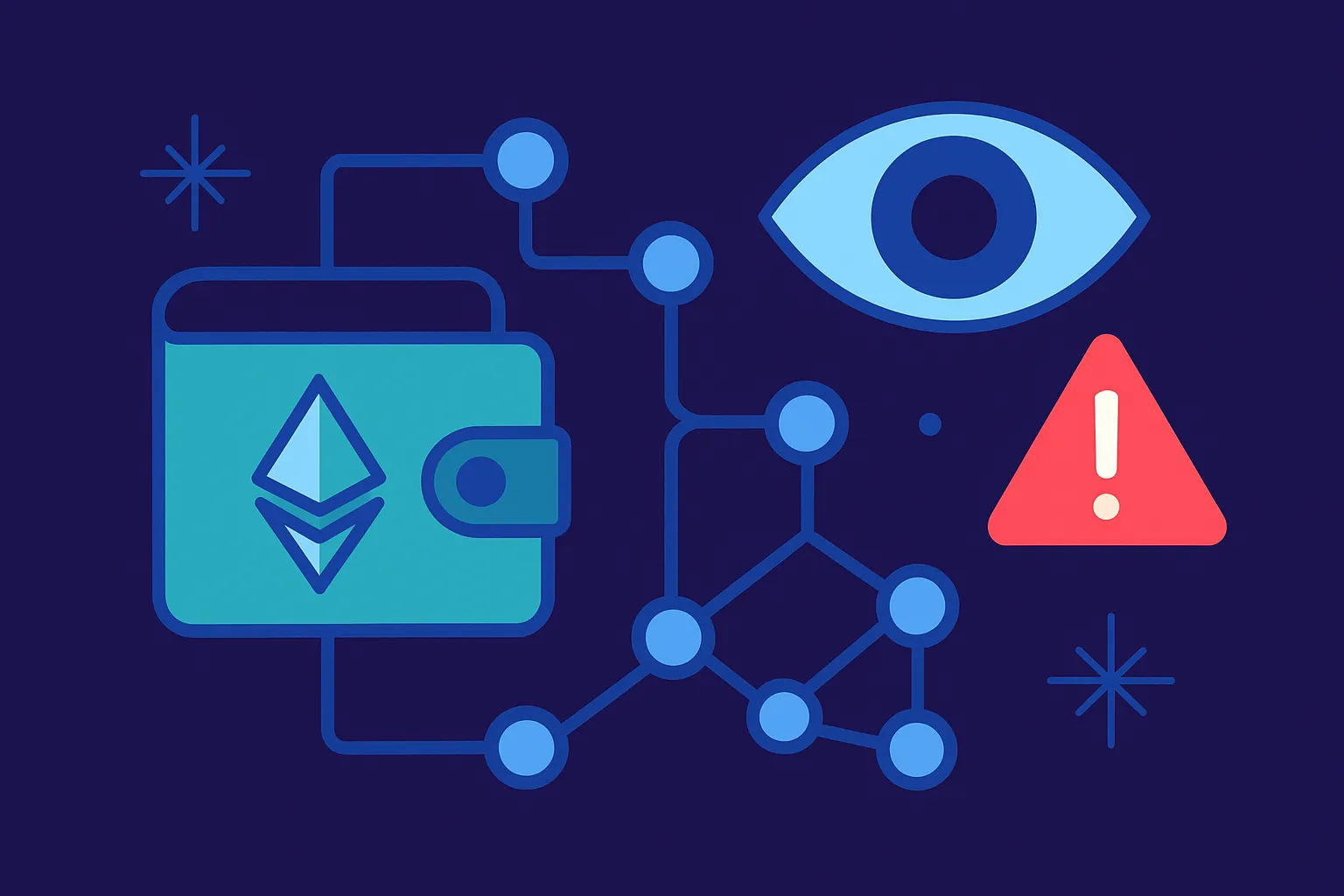Key Watcher: Real-Time Crypto Wallet Alerts
Key Watcher: Your Shield for Private Key Security
Ever paid crypto to find out that you paid the wrong wallet, or worried about a hacked private key leading to stolen funds? A Key Watcher can save your life. This system continually monitors your wallets, alerting you to outgoing payments, incoming deposits, or malicious activity in time.
Table of Contents
- What Is a Key Watcher?
- Why Every Trader and Developer Needs One
- Getting Started: Setting Up Your Key Watcher
- Best Practices for Private Key Monitoring
- Leveling Up: Advanced Monitoring Strategies
- Final Thoughts
- FAQ
What Is a Key Watcher?
Visualize a virtual on-chain guard that’s monitoring your blockchain addresses in real time and notifies you every time certain criteria are met—such as an ETH transfer, a new mint of an NFT, or a token swap. I was using a simple alert service to track an airdrop, and almost instantaneously upon a relevant token transfer, the alert provided me with a push notification. It was like having my own on-chain personal assistant.
Why Every Trader and Developer Needs One
Bad actors and crypto markets are both open 24/7. A Key Watcher provides you with early notifications of unauthorized transactions so that you can act before money is lost. For creators of NFTs, it can notify on unusual minting or royalty payouts. For developers of DeFi, it can notify on suspicious contract activity or possible exploits.
An example from real-world experience: a small staking protocol I worked with interrupted a potential exploit when their Key Watcher alerted them to an unexpected spike in outbound transactions, before users lost thousands of dollars’ worth of assets.
Getting Started: Setting Up Your Key Watcher
- 1. Pick Your Tool:
Self-hosted options such as a Node.js script paired with Ethers.js or Web3.js.
Hosted services such as a dedicated “crypto key watcher” with a nice interface and mobile notifications.
2. Link Your Wallet Addresses:
Copy and paste in your Ethereum, BSC, or Solana addresses.
For NFTs, include contract addresses to watch for token ID movement.
3. Configure Your Triggers:Outbound transfers above a threshold (e.g., >0.5 ETH).
Incoming funds from specific contracts—perfect for airdrop hunters.Smart contract function calls invoking vulnerable functions.
4. SetUp Notifications:
Email, SMS, Telegram bot, or a light PWA push.
Test with a small transfer to verify your alerts fire as expected.
After I my own alerts configured, I slept more soundly knowing I’d be notified if my DeFi LP tokens ever went for a solo stroll.
Best Practices for Private Key Monitoring
- Restrict Exposure: Use watch-only wallets; never expose your seed phrase to monitoring services.
Thresholds & Whitelists: Implement effective transaction-size thresholds to prevent alert fatigue, and whitelist authorized counterparties.
Redundancy: Make up duplicate alerts—e.g., email alongside Telegram—to ensure critical alerts do not slip between the cracks.
Review Regularly: Review your watch list every month to delete stale addresses and include fresh contracts that you work with.
One of the NFT collectors I know disabled notifications for each token transfer and before long, missed a generous gift drop—highlighting just how important fine-tuned filters are.
Leveling Up: Advanced Monitoring Strategies
- On-Chain Dashboards: Insert a Dune Analytics chart showing alert volume by chain—see outliers and trend spikes.
Automated Responses: Link a bot that automatically closes your DeFi positions in case suspicious activity is detected.
Cross-Chain Monitoring: Monitor multiple blockchains simultaneously, crucial if you have diversified assets across Solana, BSC, and Ethereum.
Historical Analysis: Store alert logs and run regular audits to search for patterns—perhaps an address that you trusted starts behaving strangely beforehand.used to correlate alert data with market losses, noticing more private-key activity preceding big sell-offs, which helped me to better time my own trades.
Final Thoughts
A Key Watcher is not a nicety—it’s the foundation of modern crypto security and operational management. By developing custom triggers, offering reliable alerts, and regularly checking logs, you switch passive wallets to active protection. Solo trader, NFT creator, or DeFi builder—bringing a Key Watcher on board can reduce your exposures and provide reassurance in real-time.
FAQ
Which blockchains do a Key Watcher support?
Popular options are Ethereum, BSC, Solana, Polygon, and more. Choose a tool that best fits the chains you use most.
How can I keep from getting overwhelmed with notifications?
Set minimum transaction amounts, whitelist addresses you know, and use multiple filtering criteria to make sure notifications are still relevant and manageable.
Is my private key ever at risk?
No—reliable services use watch-only addresses or APIs, keeping your seed phrase offline and safe.
Post created by Robert AI Team




